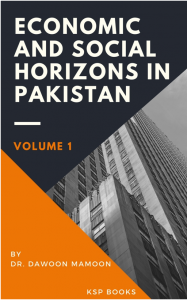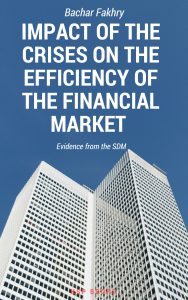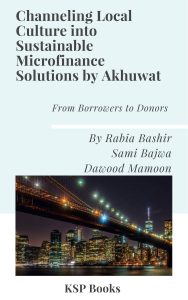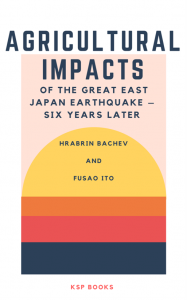Synopsis
(Ch.1) The aim of this chapter is to try to explain governance failures in Sub-Saharan Africa and to identify reforms which can lead to good governance. The failures are mainly due to institutions that do not work properly, corruption, and lack of real democracy. Governance reforms can be both institutional and political. The political reforms should promote and reinforce democratic practices. Institutions should guarantee the rule of law and limit the elite’s economic and political power.
(Ch.2) This chapter addresses in details the basic concept of time series and predicting them with the use of Box – Jenkins Methodology multi-variables. The study aims at using the Methodology of Box – Jenkins in predicting estimating and analyzing the economic variables specifying the rate of exchange in Sudan during the period 1975 – 2019 with entering these variables in the estimated model, the study made use of the descriptive Methodology for analysis and the statistical methodology in realizing its objectives and the (SPSS25, NCSS20, MINITAB16, E_views10). The study conclude that the time series is the best methods for prediction in general, and the methodology of Box – Jenkins of multi- variables in particular, and in stability and (stationary) of the time series is due to the existence of the random orientation and the nature of the random indicatives of macro-economics in their environment. The proper model of the study is (ARIMA 2.1.1) according to Box – Jenkins Methodology (the multi variables one). The study concluded with to the quality and suitability of the models of (ARIMA 2.1.1) the multi-variables in predicting the rate of exchange and the specified variables. The study recommended the followings. To strive to find date base that meets all the needs of ministry of finance and National economics and the research and statistic administration at the central Bank of Sudan, and the necessity to give full care to statistical, econometrics and predictive studies regarding the different economic phenomena. The economic sector at (the Ministry of finance and National economy and the central bank of Sudan should use the model of (ARIMA 2.1.1) in predicting the rate of exchange in future accompanied with specified economic indicatives in the Models.
(Ch.3) This chapter examines whether sub-Saharan Africa’s external debt is sustainable. The application of the Simonsen criterion and the conditions of the Harrod-Domar debt and growth model show that this debt is not sustainable. As a possible solution for the sustainability of this debt, the author proposes to transpose the principles of private management to the public sector by strictly respecting financial debt ratios.
(Ch.4) The chapter aimed to measure the impact of monetary policy and financial stability in the exchange rate tools in the study period 1980-2019. The significance of this study is come from the impact of the whole factors essential instrument of monetary and financial policy, and technical factors for the instability of exchange rates and the impact on economic stability in the Sudan. To do this analysis, we develop a class of instrument-based semi parametric system of simultaneous equations estimators for panel data and prove that our estimators are consistent and asymptotically normal. The study found many results the most important results is, that the weakness of monetary and financial policies and ineffective high degree due to the weakness of the monetary markets, and its narrow scope, the increasing impact of the financial non-banking institutions, making the Central Bank and Ministry of Finance not to directing the activity of these institutions in line with the means of the monetary and financial policies. it was a lack of official data for time series variables standard models estimated negative impact on the appreciation, as the results did not match with the hypotheses to the study period, the existence of macroeconomic policies (monetary and financial) planned center large investments and problems in the completion of projects programmed led to excessive borrowing from abroad in addition to monetary issuance of central bank without charge in production.
(Ch.5) The author of this chapter wants to show that industrialisation by substitution of imports has been a failure in Africa and it has made firms in this part of the world less competitive on the foreign market. As such he suggests a different industrialisation strategy which in the context of globalisation of economies and the fierce competition of the international market reinforces the competitiveness of African countries. This new strategy is translated amongst others by the appropriation of new technologies, the protection of infant industries, the cloning of manufactured products imported out of Africa, regional integration and the culture of exporting manufactured products.
(Ch.6) Competitiveness of Dar es Salaam city depends on strategic location, local market demand, integration with regional clusters, and human resources. Various companies and programmes have identified and exploited each of these advantages from time to time. Therefore, this paper explores the empirical and theoretical literature reviews on the challenges and constraints of competitiveness of small scale entrepreneurs in Dar es Salaam city. Most important is the efforts of the government Small and Medium Entrepreneurs (SMEs) initiatives for improving the informal sector that employs the majority of the Tanzanians. It is the detriment of the competitiveness, that the actors will lay the foundations for the attractiveness of a city as a place to live and do business. The competitiveness of a city is also greatly influenced by good governance and the involvement of the private sector. Thus, Dar es Salaam city needs the assessment that will focus on the conditions required for a vibrant local economy that attracts inward investments, as well as on the responsiveness of the Government strategies in the Small Scale Entrepreneurship.
Contents
About the Editor(s)
ISBN
978-605-7736-97-0
Date of Publication
September 15, 2020
File Size: 3716 KB
Length: xx + 174 pages
This work is licensed under a Creative Commons Attribution 4.0 International License.
















